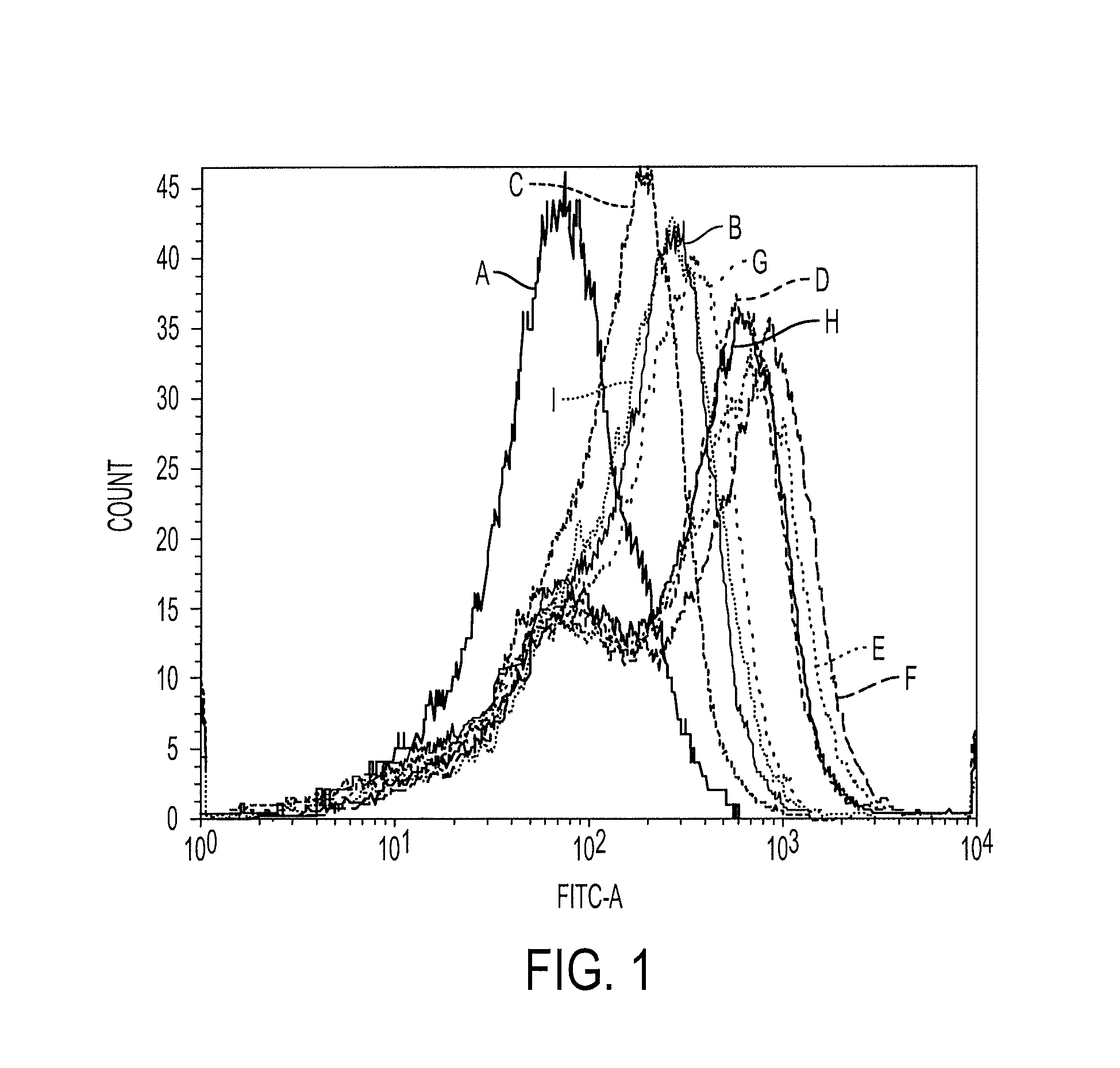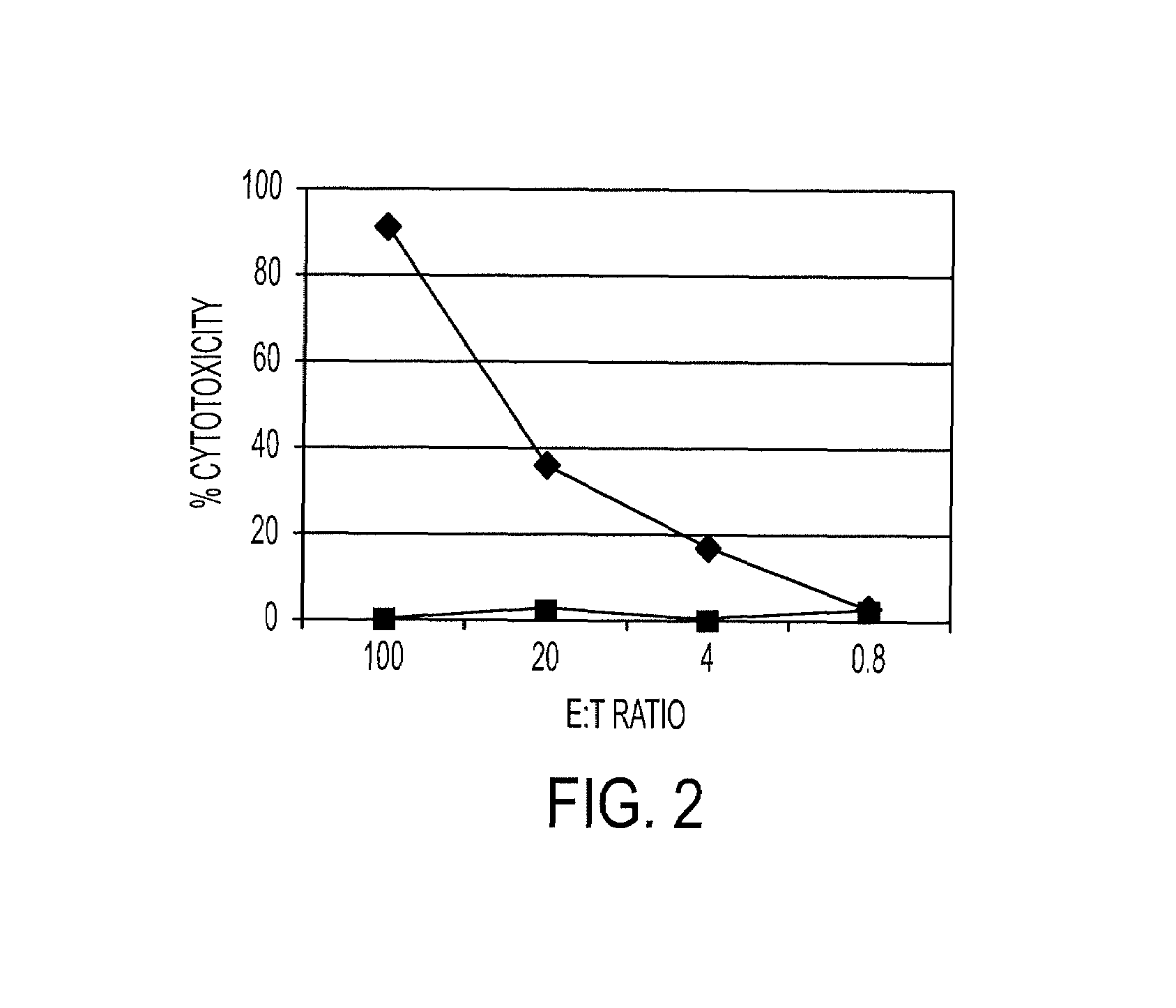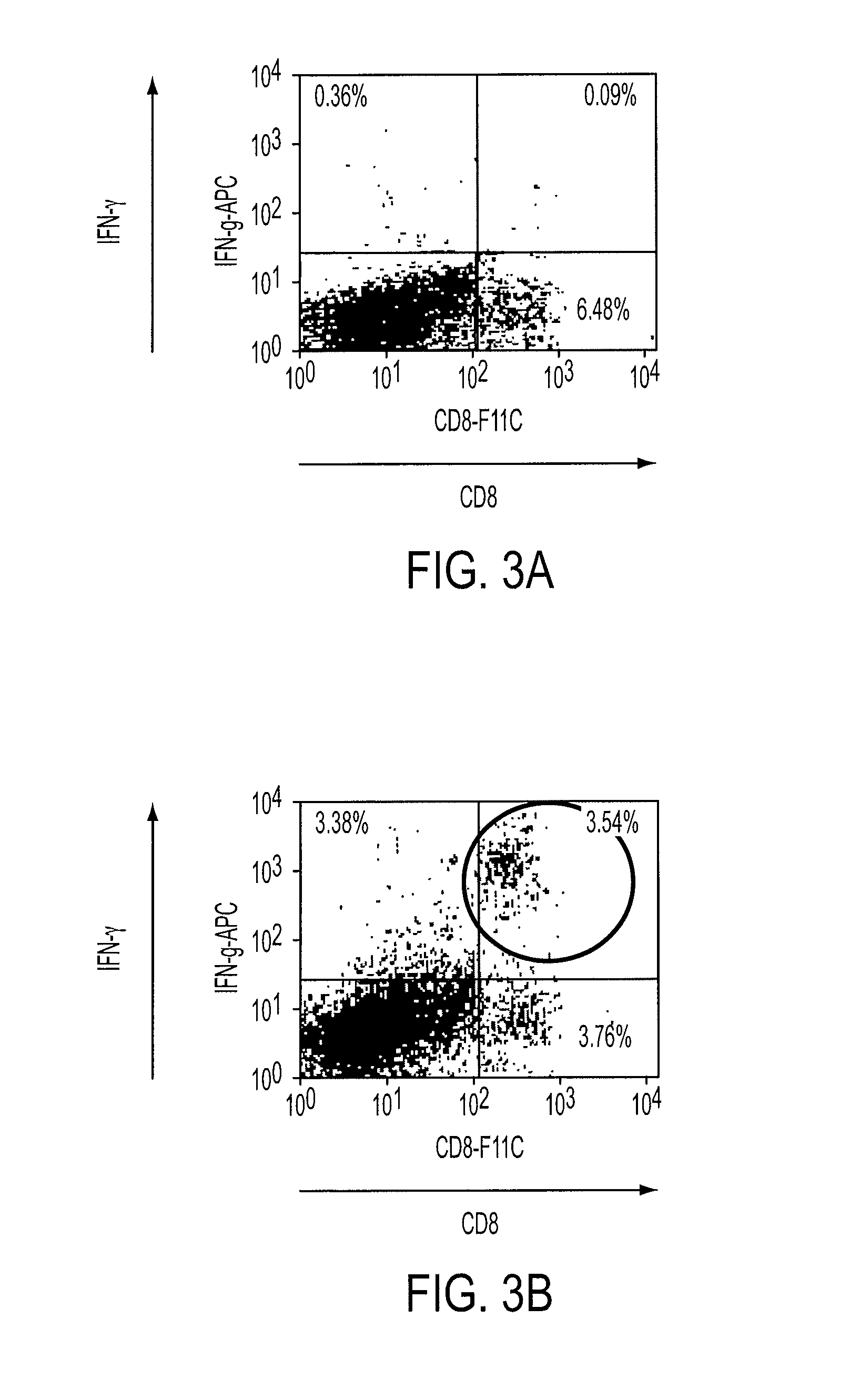Polyomavirus cellular epitopes and uses therefor
a polypeptide and polypeptide technology, applied in the field of medical science, can solve the problems of no other antiviral therapy for polyomavirus, no other antiviral therapy available for polyomavirus, and associated with considerable nephrotoxicity itself, and achieve the effect of low frequency of ctl precursors
- Summary
- Abstract
- Description
- Claims
- Application Information
AI Technical Summary
Benefits of technology
Problems solved by technology
Method used
Image
Examples
example 1
Identification of HLA-A*02-Restricted Epitopes of BKV VP1.
[0056]Sequences with the motif characteristics of T-cell epitopes were identified within the open reading frames encoding the BKV VP1 major capsid polypeptide using computer-based algorithms that predict 9-or 10-mer amino acid sequences likely to be generated by proteasomal cleavage and to bind to HLA-A*02. The SYFPEITHI™, BIMAS™, SVMHC™ and FRAGPREDICT™ algorithms were used to select the panel of 6 candidate epitopes shown in Table II, below.
[0057]
TABLE IIPredicted HLA-A2 Restricted Epitopes from BKV VP1.PeptideVP1NamePositionSequenceSEQ ID NO:BK2626-35KLLIKGGVEV8BK27a27-36LLIKGGVEVL10 BK27b27-35LLIKGGVEV9BK108108-116LLMWEAVTV1BK107107-116NLLMWEAVTV2BK109109-118LMWEAVTVQT11
[0058]Peptides were synthesized using standard FMOC protocols using a Symphony Quartet™ peptide synthesizer and purified to greater than 95% purity by HPLC. The identity of the peptides was confirmed by MALDI TOF mass spectrometric analysis using a Kompac...
example 2
In Vivo Immunogenicity Testing in Transgenic Mice
[0060]Peptides BK26, BK27b, BK108, and BK107 were used to immunize HHD-II transgenic mice, with a CpG-rich oligodeoxynucleotide and PADRE T-helper peptide in incomplete Freund's adjuvant. These HHD-II mice have a humanized immune system and are well-recognized to predict immune responses in humans. The mice express a transgenic monochain histocompatability class I molecule in which the C terminus of the human β2m is covalently linked to the N terminus of a chimeric heavy chain (HLA-A*0201-α1, -α2, H-2Db-α3-transmembrane, and intracytoplasmic domains). See Firat et al., Eur. J. Immunol. 29:3112-3121, 1999, the disclosures of which are hereby incorporated by reference. Fourteen days after immunization, the mice were sacrificed, the spleen removed, and parallel in vitro stimulation cultures were set up using each of the four peptides above.
[0061]In vitro stimulation of PBMC was performed as follows. Cryopreserved PBMC were cultured in 24...
example 3
In Vivo Processing of VP1 Generates the Peptide Epitope, BK108
[0063]A transgenic murine model was used to test whether the peptides that showed positive HLA-A2 binding in vitro were generated by in vivo cellular processing and displayed on the surface of antigen-presenting cells. A recombinant Modified Ankara Virus (MVA) was constructed to express the BKV VP1 polypeptide as follows: nucleotide sequences corresponding to the BKV antigen and VP1 open reading frame sequences of interest were cloned by PCR amplification using PBKV (33-1; ATCC #45024) as a template. The amplification products were cloned into pCR2.1, and verified by nucleotide sequencing before re-cloning into the recombination vector pLW22-1. Generation and selection of rMVAs was performed using previously described methods. See Wang et al., J. Virol. 78:3965-3976, 2004. Verification of expression was done by immunostaining of BHK monolayers infected with the rMVAs using an anti-polyomavirus antibody (Novocastra™).
[0064...
PUM
| Property | Measurement | Unit |
|---|---|---|
| density | aaaaa | aaaaa |
| degree of serological cross-reactivity | aaaaa | aaaaa |
| antibody adsorption | aaaaa | aaaaa |
Abstract
Description
Claims
Application Information
 Login to View More
Login to View More - R&D
- Intellectual Property
- Life Sciences
- Materials
- Tech Scout
- Unparalleled Data Quality
- Higher Quality Content
- 60% Fewer Hallucinations
Browse by: Latest US Patents, China's latest patents, Technical Efficacy Thesaurus, Application Domain, Technology Topic, Popular Technical Reports.
© 2025 PatSnap. All rights reserved.Legal|Privacy policy|Modern Slavery Act Transparency Statement|Sitemap|About US| Contact US: help@patsnap.com



